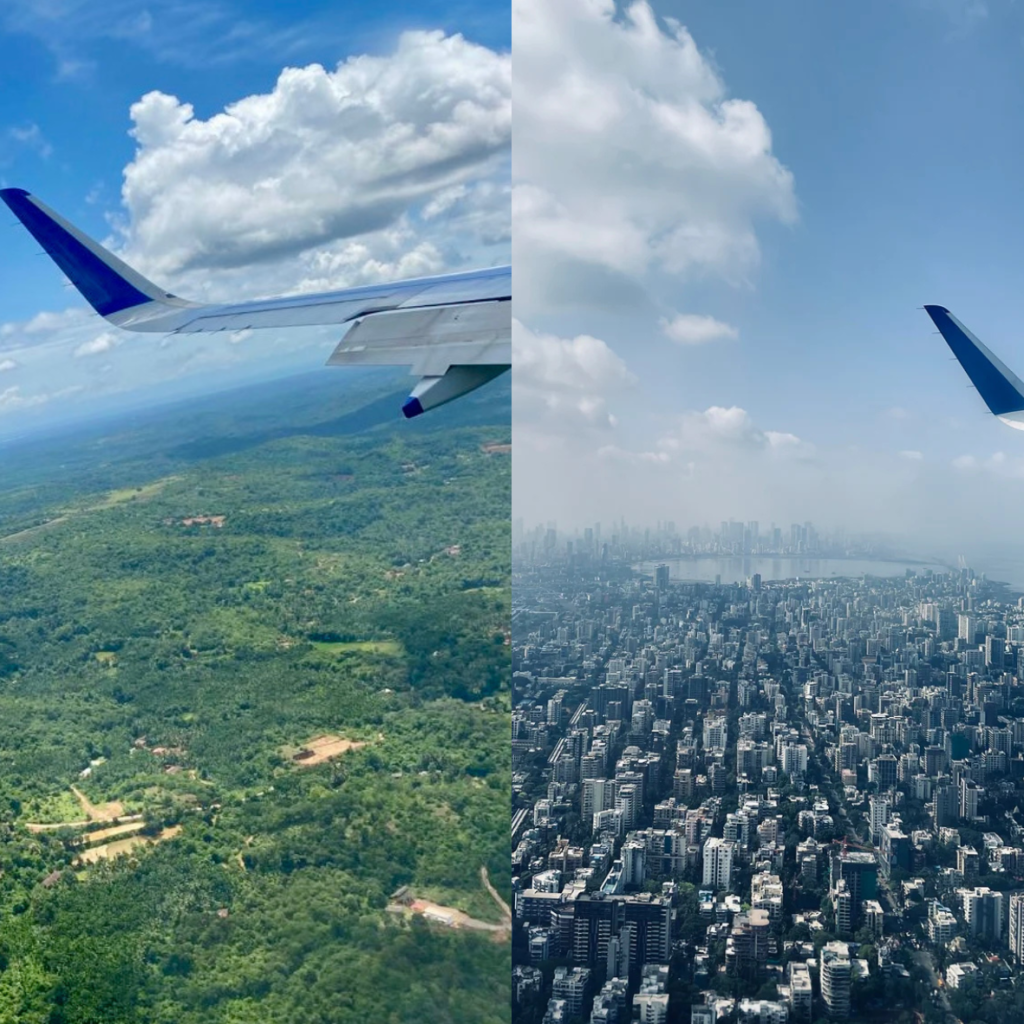
Mangalore is where my roots lie, the place where I was born and spent countless vacations at my grandmother’s house surrounded by lush greenery, the scent of wet earth after the rain, and towering coconut trees against clear blue skies
Returning to Mumbai after these breaks was always a stark contrast. Mumbai, a city I absolutely love, where I live for the rest of the year, where skyscrapers stretch into the sky, and greenery is a rare sight, often made me wonder why both places felt like entirely different worlds.
What troubles me the most is seeing the once-green Mangalore slowly lose its charm. Over the years, I’ve watched Mangalore slowly lose its lush greenery too, as urbanization has taken hold. It’s similar to what I’ve noticed in Mumbai, where finding a bit of greenery has become more difficult over time
Growing up with these contrasting scenes has made me realize that it’s clear that our cities are moving toward a future where nature seems to be an afterthought. With every passing year, our connection to nature becomes weaker. We need to find a balance between urban development and environmental preservation. The mangroves, the paddy fields, and the coconut plantations are being cleared to make way for buildings and infrastructure.
It’s a pattern that repeats itself in city after city, and it makes me wonder—how much are we willing to sacrifice in the name of progress? Yet, I believe that urban development and nature don’t have to be mutually exclusive. Cities can grow while still preserving their green spaces. In fact, integrating nature into urban planning is essential for the future.
Nature an Afterthought
One of the key drivers of this shift has been the relentless pace of urbanization.
As cities expand, nature is often sacrificed in the name of development.
What begins with a few buildings soon becomes a domino effect—forests are cleared, wetlands are filled, and parks shrink. In both Mangalore and Mumbai, I’ve seen how this rapid urbanization has stripped the land of its natural resources,
Urban sprawl has consequences that stretch beyond aesthetics. In Mumbai, the loss of green cover has made the city more vulnerable to flooding, with concrete preventing natural water absorption.
But it doesn’t have to be this way. Cities can grow without compromising their natural environments. By integrating sustainable practices like effective waste management and green architecture, we can reduce pollution, manage resources efficiently, and create eco-friendly spaces. Instead of replacing nature, we should focus on recycling waste, minimizing landfill use, and designing buildings that coexist harmoniously with the environment, ensuring that sustainability becomes an integral part of urban life.
Sustainable Urban Growth
While the situation may seem dire, there is hope in the form of technology and innovation. As someone passionate about sustainability, I see a future where technology can help us restore the balance between development and nature
Renewable energy solutions like solar panels can reduce the carbon footprint of large urban areas. In places like Mangalore, which still retain some of their natural beauty, eco-friendly infrastructure like rainwater harvesting and energy-efficient buildings can ensure development doesn’t come at the cost of environmental degradation.
As much as I love Mumbai, it’s clear that we need new solutions to help this city, and others like it, grow sustainably.
Benefits of Urban Green Spaces
Access to greenery in urban environments offers substantial benefits for public health, air quality, and mental well-being.
In terms of air quality, plants play a crucial role in filtering pollutants and improving overall environmental conditions. Trees and plants absorb carbon dioxide and release oxygen, helping to reduce the urban heat island effect and combat air pollution.
The mental health benefits of green environments are equally important. Spending time in nature has been linked to reduced stress, anxiety, and depression. The calming effects of natural surroundings promote relaxation and can enhance overall mood.
integrating greenery into urban spaces is crucial for enhancing overall health, improving air quality, and promoting mental well-being. These benefits highlight the importance of preserving and expanding natural environments within cities to create healthier, happier communities.
Conclusion
As we look to the future, sustainability should not be viewed as a burden but as an opportunity for creativity and progress.
Mumbai, with all its chaos and energy, has a special place in my heart. I love its spirit, the way it never sleeps, and how it offers something new every day. But one thing I’ve always missed here is the green spaces.
If we don’t act now, our future generations will only know the greenery we once cherished through stories. I hope to contribute to creating a world where both nature and development can thrive hand in hand.
We are beginning to feel the effects of the choices we’ve made, and it’s clear that the more we take from nature, the more we’ll have to pay in the long run.
We have the tools, the knowledge, and the responsibility to reshape our world.
